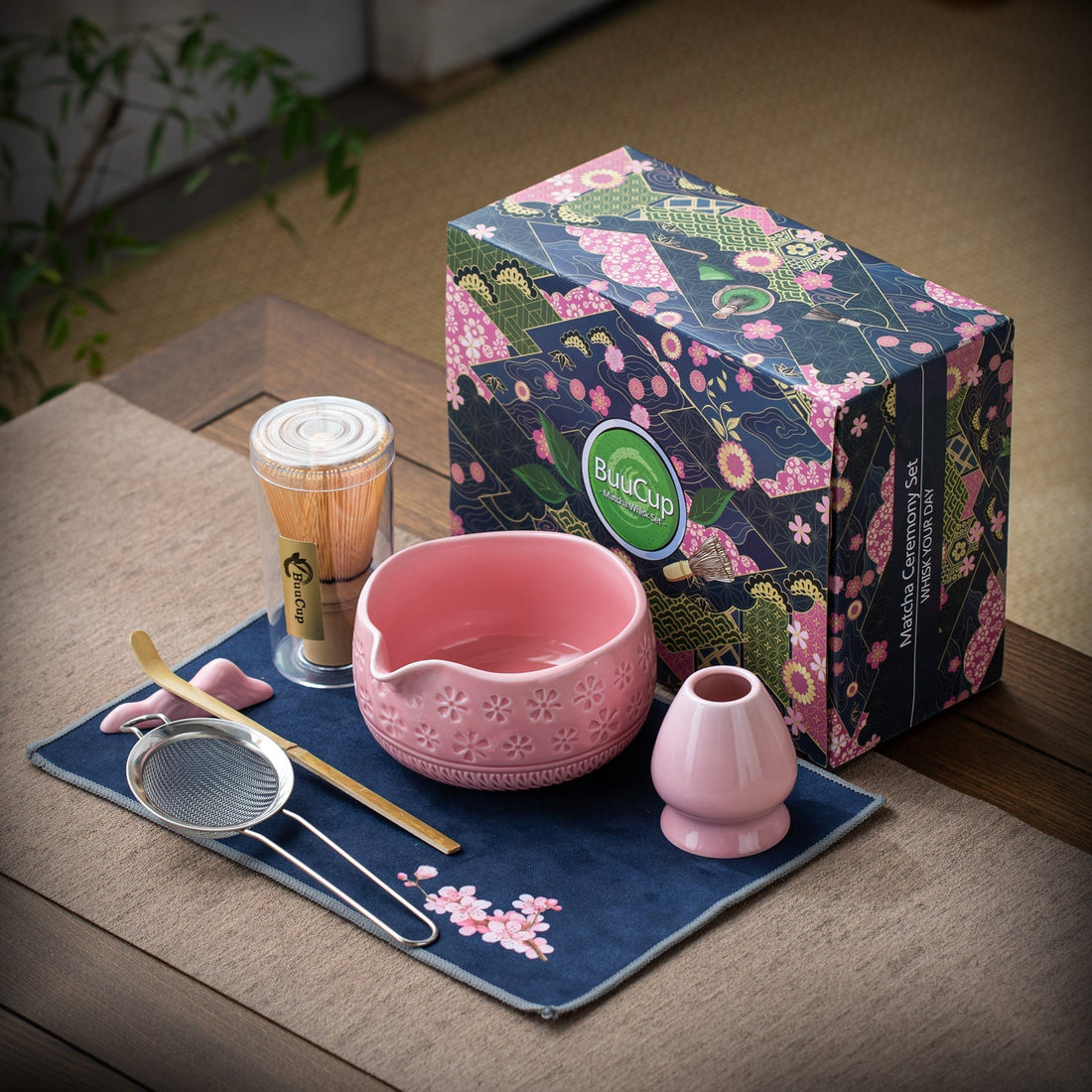Recomendation

BuuCup Matcha Set - Match Bowl with Spout and Whisk, 15 OZ, Matcha Scoop | Matcha Whisk Stand (Chasen Holder) - 4pc Perfect Matcha Kit for Matcha Tea Ceremony
$ 35.45
Introduction
Tea ceremonies are a cornerstone of Japanese culture, steeped in tradition and grace. Among the various types of tea, matcha holds a special place. Known for its vibrant green color and distinct flavor, matcha is not just a beverage but a symbol of harmony and tranquility.
The Essence of Matcha Tea Ceremony
Matcha, which translates to "powdered tea," has its origins in China and was later perfected in Japan. It is made from shade-grown green tea leaves that are ground into a fine powder. The preparation of matcha is meticulous, involving grinding the tea leaves, measuring the powder, whisking it with hot water, and serving it in a bowl. The flavor profile of matcha is unique, offering a balance of bitterness and sweetness with a creamy texture.
The role of matcha in the tea ceremony is not just for consumption but also for its symbolism. It represents the essence of the moment, a connection between the host and guests. The process of preparing matcha is as important as the tea itself, with each step requiring focus and precision. The aesthetics of matcha are also significant, with the presentation and use of utensils adding to the ceremony's beauty.
The Ritual and Philosophy of Matcha Tea Ceremony
The spiritual aspects of the tea ceremony are deeply rooted in Zen Buddhism, with matcha being a central element. Sharing matcha is more than a social event; it's a cultural exchange that fosters understanding and respect. The principles of harmony, respect, purity, and tranquility are woven into every aspect of the matcha tea ceremony.
The influence of Zen Buddhism is evident in the ceremony's structure and the mindfulness with which it is conducted. Each movement is deliberate, each sip is savored, and the entire experience is a meditation in motion.
Modern Adaptations and Global Appreciation
While the traditional matcha tea ceremony remains a revered practice, it has also evolved over time. Today, matcha has spread globally, integrating into various cultures and culinary traditions. From lattes to ice cream, matcha's versatility has allowed for contemporary interpretations and innovations in tea ceremonies.
Despite these modern adaptations, the core values of the matcha tea ceremony endure. The ritual remains a symbol of cultural heritage and a testament to the enduring appeal of this ancient practice.
Conclusion
In conclusion, matcha's significance in tea ceremonies cannot be overstated. It is more than just a drink; it is a cultural artifact that embodies the essence of Japanese tradition. The matcha tea ceremony's enduring appeal lies in its ability to bring people together in a shared experience of mindfulness and connection. As matcha continues to captivate the world, its cultural significance remains a testament to the power of a simple cup of tea.




